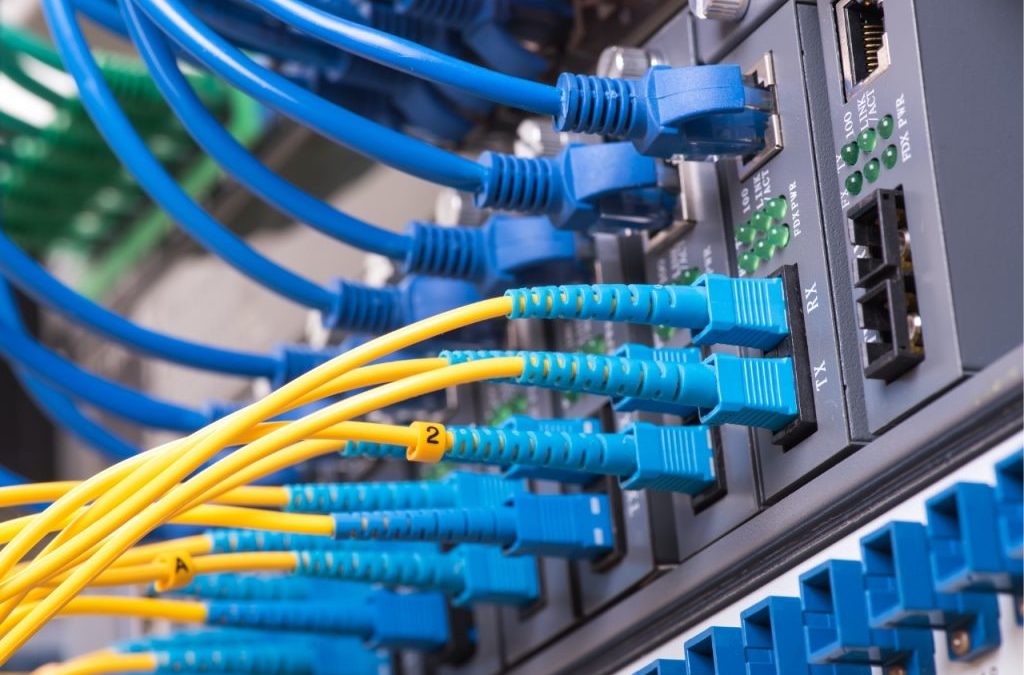- Hybrid Fibre Coaxial (HFC):
HFC called ‘Hybrid Fibre Coaxial’, is a network technology of NBN which is used in many areas. This connection works in the premises where an existing cable network (which was to provide cable broadband internet service and pay TV) will be used to get the final connection to complete NBN access. A coaxial cable is then used to connect to a NBN device which is installed inside the customer’s premises.
NBN HFC:
The fibre cable and cable line/ coaxial cable is being connected to the NBN connection box outside the house with connects to the TV line inside the home. To get the service started at home, that TV line must be connected to the box inside the home which is called HFC Network Terminal. You will need to connect a router into NBN HFC NTD to access internet service.
How fast is HFC NBN?
HFC NBN is providing internet speed up to 1000Mbps downloads and 50Mbps upload, it depends with the number of factors which includes provider, location, equipment’s of network and quality if existing cable. Occom offers a range of nbn™ speeds in Australia. Check out our full range of nbn™ plans to see what suits your needs
NBN HFC Internet Structure:

- FTTP:
FTTP stand for Fibre to the Premises, and It is considered as the best NBN connection type as it delivers high speed of internet service. This connection is unique as it has only fibre optical cable to run directly to the premises.
FTTP is the best nbn™ connection type of technology which is more consistent in its delivery of ultrafast internet speed. You will need to connect a router into Network Termination Device (NTD) to access Internet service.
NBN FTTP Internet Configuration:
- The fibre cable on the street will be connected to the NBN utility box outside the house, and this box will further connect to the NTD/ONT fibre box which is inside the house.
- NTD box which is available inside the house will further connect to router to give FTTP internet service.

The below diagram shows the installation of NBN FTTP internet service. FTTP internet connection is been done with fibre-optic cable. It is connected all the way to house via NBN Utility box and NBN connection box.

- FTTB:
Fibre to the building (FTTB) also called as Fibre to the basement. It is used to connect the apartments, buildings with the internet connection. This connection used the copper wire to connect the whole building’s level with the internet.
NBN FTTB Internet Framework:
- In this type, the fibre cable on street is connected to the building’s communication room called Main Distribution Frame (MDF).
- the telephone line (copper wire) is further connecting from MDF to the customer house for each level of the building.
- VDSL modem is needed that plug into telephone wall socket.

The below picture shows the FTTB structure of installation as the copper wire will be connected with the Main Distribution Frame and provided to each level of the building to get the internet on each floor.

- FTTN:
Fibre to the Node (FTTN) utilises fibre optic cable to the nearest node to your premises. The signal from the optic fibre cable then travels down through existing copper lines to the primary telephone wall socket. A VDSL 2 compatible modem router is required for this type of connection to work.
NBN FTTN Internet Architecture:
- In this type, the fibre cable on the street is connected to the nearest node outside the house
- This node will connect the existing copper telephone line to the client house.
- This telephone line will connect to the VDSL modem inside the house to give the internet connection.

The picture given below depicts the FTTN internet architecture in which the fibre cable connected to the node and further the copper cable is leading to client’s home which will connect to the VDSL modem to provide the internet service for the house.

- FTTC:
Fibre to the Curb (FTTC) is the newest technology available in which it is capable of bringing optic fibre cables almost all the way to your premises. The connection then travels through existing copper cables into the home for quick and stable internet. A nbn™ connection device, short for NCD, is then set up within the premises and then connected to the primary telephone wall socket. You will need to connect a router into nbn™ NCD to access Internet service.
NBN FTTC Internet Infrastructure:
- fibre cable is installed on the street and connected to Distribution Point Unit (DPU).
- From this, the telephone line has been connected to the house
- The FTTC terminal has been connected after that to provide the internet connection.
- To connect to the internet, a compatible router with WAN port is needed to give internet connection for all devices.

The diagram given below is the NBN FTTC internet infrastructure which shows the installation of internet service. The fibre cable on the street is connected to the Distribution point unit from where the copper cable will be leading to the client’s house and deliver internet connection.

OCCOM—Optical Communication Expert
Fast Response, Fast Trouble Shooting!
Occom is a Sydney based Internet Service Provider. Rich experience in telecommunication industry, great customer reputation. Partnering with top-tier fiber service providers, OCCOM offers a variety of Internet and home phone connection options. We provide free onsite support, ensuring your communication and entertainment needs. You will be impressed by our outstanding customer service staff.
Tel:1300 299 999
Website:occom.com.au


